25. Goula, A.M., and Adamopoulos, K. (2005). Spray drying of tomato pulp in dehumidified air: II. The effect on powder properties. Journal of Food Engineering, 66, 35-42.
26. Goula, A.M., and Adamopoulos, K. (2008). Effect of maltodextrin addition during spray drying of tomato pulp in dehumidified air: II. Powder Properties. Drying Technology, 26, 726 - 737.
27. Grabowski, J., Truong, V., and Daubert, C.R. (2006). Spray- Drying of Amylase Hydrolyzed Sweetpotato Puree and Physicochemical Properties of Powder. Journal of Food Science, 71, 12.
28. Guerard, F., Guimas, L., and Binet, A. (2002). Production of tuna waste hydrolysates by a commercial neutral protease preparation. Journal of Molecular Catalysis B: Enzymatic 19-20: 489 - 498.
29. Hoffman, L., Fisher, P., and Sales, J. (2000). Carcass and meat characteristics of the Nile crocodile (Crocodylus niloticus). Journal of Sci. Food and Agri., 80, 390-396.
30. Hoyle, N., and Merritt, J.H. (1994). Quality of Fish Protein Hydrolysates from Herring (Clupea harengus). Journal of Food Science, 59, 76-79.
31. Hồ Viết Quý, 2006. Phân tích Hóa lý. NXB Giáo Dục, 571 trang.
32. Kiew, P.L., and Don, M.M. (2013). Screening of significant factors in collagen extraction from hybrid Clarias sp. using a statistical tool. International food research journal, 20, 1913-1920.
33. Kittiphattanabawon, P., Benjakul, S., Visessanguan, W., Kishimura, H., and Shahidi, F. (2010). Isolation and Characterisation of collagen from the skin of brownbanded bamboo shark (Chiloscyllium punctatum). Food Chemistry, 119, 1519-1526.
34. Kittiphattanabawon, P., Benjakul, S., Visessanguan, W., Nagai, T., and Tanaka,
M. (2005). Characterisation of acid-soluble collagen from skin and bone of bigeye snapper (Priacanthus tayenus). Food Chemistry, 89, 363-372.
35. Koli, J.M., Basu, S., Nayak, B., Patange, S., Pagarkar, A.U., and Gudipati, V. (2012). Functional characteristics of gelatin extracted from skin and bone of Tiger-toothed croaker (Otolithes ruber) and Pink perch (Nemipterus japonicus). Food and Bioproducts Processing, 90, 555-562.
36. Kotzamanis, Y.P., Gisbert, E., Gatesoupe, F., Infante, J.Z., and Cahu, C. (2007). Effects of different dietary levels of fish protein hydrolysates on growth, digestive enzymes, gut microbiota, and resistance to Vibrio anguillarum in European sea bass (Dicentrarchus labrax) larvae. Comparative biochemistry and physiology. Part A, Molecular and integrative physiology, 147 1, 205-14.
37. Kristinsson, H., and Rasco, B. (2000). Fish Protein Hydrolysates: Production, Biochemical, and Functional Properties. Critical Reviews in Food Science and Nutrition, 40, 43 - 81.
38. Kuldiloke, J. (2002). Effect of ultrasound, temperature and pressure treatments on enzyme activity and quality indicators of fruit and vegetable juices.
39. Kurozawa, L., Park, K., and Hubinger, M. (2009). Effect of carrier agents on the physicochemical properties of a spray dried chicken meat protein hydrolysate. Journal of Food Engineering, 94, 326-333.
40. Kurozawa, L., Park, K., and Hubinger, M. (2008). Optimization of the enzymatic hydrolysis of chicken meat using response surface methodology. Journal of food science, 73 5, C405-12.
41. Lê Ngọc Tú, La Văn Chứ, Đặng Văn Thu, Nguyễn Thị Thịnh, Bùi Đức Hợi và Lê Doãn Diên (2002). Hóa sinh công nghiệp. NXB KH-KT Hà Nội, tr 105-111.
42. Lê Thị Biên, Võ Văn Sự và Phạm Sỹ Tiệp (2006). Kỹ thuật chăn nuôi một số động vật quý hiếm. Nhà xuất bản Lao động – Xã hội, tr 132 - 156.
43. Lê Văn Việt Mẫn, Lại Quốc Đạt, Nguyễn Thị Hiền, Tôn Nữ Minh Nguyệt và Trần Thị Thu Trà (2010). Quá trình hóa học. Trong Công nghệ chế biến thực phẩm. NXB ĐH Quốc gia TP.HCM, VN, 291 - 300.
44. Li, D., Mu, C., Cai, S., and Lin, W. (2009). Ultrasonic irradiation in the enzymatic extraction of collagen. Ultrasonics sonochemistry,16 5,605-9.
45. Li, H., Pordesimo, L.O., and Weiss, J. (2004). High intensity ultrasound-assisted extraction of oil from soybeans. Food Research International, 37, 731-738.
46. Liaset, B., Nortvedt, R., Lied, E., and Espe, M. (2002). Studies on the nitrogen recovery in enzymic hydrolysis of Atlantic salmon (Salmo salar, L.) frames by Protamex™ protease. Process Biochemistry, 37, 1263-1269.
47. Li-li, C., Li, Z., Hua, L., Huo-gen, H., and Shan, W. (2011). Extraction and characterization of collagen from the eel Bone. 2011 International Conference on New Technology of Agricultural, 1051-1055.
48. Liu, D., Liang, L., Regenstein, J., and Zhou, P. (2012). Extraction and characterisation of pepsin-solubilised collagen from fins, scales, skins, bones and swim bladders of bighead carp (Hypophthalmichthys nobilis). Food Chemistry, 133, 1441-1448.
49. Liu, F., Liu, C., Lorena, D., Zhang, X., and Fu, Z. (2012). Evaluation of the antioxidant activity of collagen peptide additive extracted from cod Skin. Journal of Environmental Protection and Ecology 13(3A): 1836–1841.
50. Li, Guixia & Wan, Yunfei & Song, Xuan & Wang, Ying & Zan, Linsen & Zhu, J.. (2018). Effects of Various Processing Methods on the Ultrastructure of Tendon Collagen Fibrils from Qinchuan Beef Cattle Observed with Atomic
Force Microscopy. Journal of Food Quality. 2018. 1-10. 10.1155 /2018/ 9090831.
51. Lu, X., Jiong, C., Chen, M.Z., Lü, J.N., Shi, Y., and Li, H.Y. (2010). Hydrolysates of swim bladder collagen from miiuy croaker, Miichthys miiuy, enhances learn-ing and memory in mice. Current Topics in Nutraceutical Research, 8, 149-156.
52. McCarthy, A., O'callaghan, Y., and O’Brien, N. (2013). Protein Hydrolysates from Agricultural Crops—Bioactivity and Potential for Functional Food Development. Agriculture, 3, 1-19.
53. Masters, K. (1991). Spray Drying Handbook, 5rd ed. Longman Scientific and Technical, England.
54. Nagai, T. (2000). Isolation of collagen from fish waste material — skin, bone and fins. Food Chemistry, 68, 277-281.
55. Nguyễn Đức Lượng, Cao Cường, Nguyễn Ánh Tuyết, Lê Thị Thủy Tiên, Tạ Thu Hằng, Huỳnh Ngọc Oanh, Nguyễn Thúy Huong, Phan Thị Huyền (2004). Công nghệ enzyme, NXB Đại học Quốc Gia Tp.HCM
56. Nguyễn Minh Đức (2013). Nghiên cứu thành phần cấu tạo tiêu chuẩn và tác dụng tiền lâm sàng của xương cá sấu hoa cà ứng dụng trong điệu trị bệnh tạo xương bất toàn (Osteogenesis Imperfecta). Đại học Y Dược TP. HCM.
57. Nguyễn Thị Mỹ Hương (2012). Sản xuất sản phẩm thủy phân protein từ đầu cá ngừ vây vàng bằng protease thương mại. Tạp chí KH công nghệ-thủy sản, 2: 25-30.
58. Nguyễn Trọng Cẩn và Đỗ Minh Phụng (1990). Công nghệ chế biến thực phẩm thủy sản tập 2- Ướp muối, chế biến nước mắm, chế biến khô, thức ăn chín. NXB Nông nghiệp, TP HCM, trang 95-115.
59. Nguyễn Trọng Cẩn, Nguyễn Thị Hiền, Đỗ Thị Giang và Trần Thị Luyến (1998).
Công nghệ enzyme. NXB Nông nghiệp TP.HCM, 378 trang.
60. Nguyễn Trọng Sinh (2016). Khảo sát tác dụng dược lý của sản phẩm cao xương cá sấu. Luận văn Thạc sỹ CNSH, ĐH Bách khoa Tp.HCM.
61. Nguyễn Văn Mùi (2012). Enzyme học. NXB Giáo Dục VN. 130 -198.
62. OECD Guideline (2001). "425: Acute oral toxicity—Up-and-down procedure," OECD Guidelines for the Testing of Chemicals. Organization for Economic Cooperation and Development, Paris.
63. Ogawa, M., Portier, R., Moody, M.W., Bell, J., Schexnayder, M., and Losso, J. (2004). Biochemical properties of bone and scale collagens isolated from the subtropical fish black drum (Pogonia cromis) and sheepshead seabream (Archosargus probatocephalus). Food Chemistry, 88, 495-501.
64. Omokanwaye, T., Wilson, O., Iravani, H., and Kariyawasam, P. (2010). “Extraction and Characterization of a Soluble Chicken Bone Collagen” in 26th Southern Biomedical Engineering Conference SBEC 2010, College Park, Maryland, USA, pp. 520-523.
65. Ovissipour, M., Benjakul, S., Safari, R., and Motamedzadegan, A. (2010). Fish protein hydrolysates production from yellow fin tuna Thunnus albacares head using Alcalase and Protamex. International Aquatic Research, 2, 87-95.
66. Papadakis, S., Gardeli, C., and Tzia, C. (2006). Spray Drying of Raisin Juice Concentrate. Drying Technology, 24, 173 - 180.
67. Pasteris, J.D., Wopenka, B., Freeman, J., Rogers, K., Valsami-Jones, E., Houwen, J.A., and Silva, M. (2004). Lack of OH in nanocrystalline apatite as a function of degree of atomic order: implications for bone and biomaterials. Biomaterials, 25 2, 229-38.
68. Pasupuleti, V.K., Holmes, C., and Demain, A. (2010). Applications of Protein Hydrolysates in Biotechnology. In Protein Hydrolysates in Biotechnology. Springer, USA, pp. 1-9.
69. Pataridis, S., Eckhardt, A., Mikulíková, K., Sedláková, P., and Mikšík, I. (2009). Determination and Quantification of Collagen Types in Tissues Using HPLC- MS/MS. Current Analytical Chemistry,5,316-323.
70. Patel, R., Patel, M.P., and Suthar, A. (2009). Spray Drying Technology: an overview. Indian journal of science and technology, 2, 44-47.
71. Phạm Thị Trân Châu và Phan Tuấn Nghĩa (2006). Công nghệ sinh học, tập 3: Enzyme và ứng dụng. NXB Giáo dục, Việt Nam, 195 trang.
72. Rossi, D., Flôres, S.H., Venzke, J.G., and Ayub, M.A. (2009). Biological evaluation of mechanically deboned chicken meat protein hydrolysate. Revista De Nutricao-brazilian Journal of Nutrition, 22, 879-885.
73. Rude, R. K., Singer, F. R., & Gruber, H. E. (2009). Skeletal and hormonal effects of magnesium deficiency. Journal of the American College of Nutrition, 28(2), 131–141.
74. Schmidt, C.G., and Salas-Mellado, M. (2009). Influence of alcalase and flavourzyme performance on the degree of hydrolysis of the proteins of chicken meat. Quim. Nova 32(5):1144-1150.
75. Shabde, V., and Hoo, K. (2008). Optimum controller design for a spray drying process. Control Engineering Practice, 16, 541-552.
76. Shoulders, M.D., and Raines, R. (2009). Collagen structure and stability. Annual review of biochemistry, 78, 929-58.
77. Silva, V.M., Park, K., and Hubinger, M. (2010). Optimization of the enzymatic hydrolysis of mussel meat. Journal of food science, 75 1, C36-42.
78. Silvipriya, K.S., Krishna Kumar, K., Bhat, A.R., Dinesh Kumar, B., John, A., Lakshmanan, P.(2015). Collagen: Animal Sources and Biomedical Application. Journal of Applied Pharmaceutical Science Vol. 5(03), pp.123- 127.
79. Singh, P., Benjakul, S., Maqsood, S., and Kishimura, H. (2011). Isolation and characterisation of collagen extracted from the skin of striped catfish (Pangasianodon hypophthalmus). Food Chemistry,124,97-105.
80. Sở Nông nghiệp và Phát triển Nông thôn Tp. HCM (2008). Tình hình gây nuôi và tiêu thụ sản phẩm cá sấu trên địa bàn TP.HCM 10/2008.
81. Sở Nông nghiệp và Phát triển Nông thôn TP. HCM (2013). Kết quả phát triển sản xuất và chuyển dịch cơ cấu nông nghiệp theo hướng nông nghiệp đô thị trên địa bàn thành phố năm 2013, kế hoạch 2014.
82. Soares, L.H., Marques, D.N., Albuquerque, P., and Ayub, M.A.(2000). Influence of some commercial proteases and enzymatic associations on the hydrolytic solubili-zation of deboned poultry meat proteins. Food Sci. and Tech. Int’l, 6, 301-306.
83. Szpak, P. (2011). Fish bone chemistry and ultrastructure: implications for taphono-my and stable isotope analysis. Journal of Archaeological Science,38,3358-3372.
84. Taheri, A., Kenari, A.A., Gildberg, A., and Behnam, S. (2009). Extraction and physicochemical characterization of greater Lizardfish (Saurida tumbil) skin and bone gelatin. Journal of food science, 74 3, E160-5.
85. Tôn Thất Hưng (2013). Kết quả đột phá trong việc sử dụng cao xương cá sấu điều trị bệnh xương bất toàn - BV Chấn Thương Chỉnh Hình Tp. HCM.
86. Tonon, R., Freitas, S.S., and Hubinger, M. (2011). Spray drying of açai (euterpe oleraceae mart.) juice: effect of inlet air temperature and type of carrier agent. Journal of Food Processing and Preservation, 35, 691-700.
87. Trần Minh Tâm (1998). Các quá trình công nghệ trong chế biến nông sản thực phẩm. NXB nông nghiệp TP. Hồ Chí Minh, trang 192-197.
88. Trần Minh Thông, Nguyễn Thị Thu Hương, Hà Quang Thanh và Nguyễn Minh Đức (2016). "Khảo sát mô học tác dụng của cao xương cá sấu hoa cà trên chuột nhắt trắng bị gây loãng xương bằng corticoid," TC Dược liệu, 1+2, trang 79-84.
89. Trần Thị Huyền, Nguyễn Anh Tuấn, Hoàng Ngọc Anh và Vũ Lệ Quyên (2012). Tách chiết collagen từ da cá Tra (Pangasius hypophthalmus) bằng phương pháp hóa học, Tạp chí KH - Công nghệ Thủy sản, số 2
90. Trần Thị Minh Tâm, Nguyễn Thị Thu Hương và Nguyễn Minh Đức (2015). "Nghiên cứu tác dụng tăng cường miễn dịch của cao xương cá sấu hoa cà," Tạp chí Dược liệu, vol. 20, trang 121.
91. Trần Thị Minh Tâm, Nguyễn Thị Thu Hương, Trần Văn Năm và Nguyễn Minh Đức (2014). "Khảo sát tác dụng tăng lực và tác dụng của cao xương Cá sấu hoa cà trên mô hình tăng acid uric máu thực nghiệm," Tạp chí Dược liệu,19, tr. 362.
92. UBND Tp.HCM (2021). "Chương trình quản lý, phát triển cá sấu và động vật hoang dã trên địa bàn Tp.HCM: 2011 – 2015 và 2021 – 2025”.
93. Vercruysse, L., Camp, J.V., and Smagghe, G. (2005). ACE inhibitory peptides derived from enzymatic hydrolysates of animal muscle protein: a review. Journal of agricultural and food chemistry, 53 21, 8106-15.
94. Westergaard, V. (2004). Milk powder technology: evaporation and spray drying. 5th edition, Copenhagen, Denmark. pp. 71 – 103
95. Wood, A., Ogawa, M., Portier, R., Schexnayder, M., Shirley, M., and Losso, J. (2008). Biochemical properties of alligator (Alligator mississippiensis) bone collagen. Comparative biochemistry and physiology. Part B, Biochemistry and molecular biology, 151 3, 246-9.
96. White, J.A., Hart, R.J., and Fry, J.C. (1986). An evaluation of the waters Pico-Tag system for the amino acid analysis of food materials. Journal of Automatic Chemistry, 170-177.
97. Xia, S.H., Wang, Z., and Xu, S.Y. (2007). Characteristics of Bellamya purificata snail foot protein and enzymatic hydrolysates. Food Chemistry, 101, 1188- 1196.
98. Xingwu L, and Hong-jun L.(2012). Optimization of Microwave-assisted Extraction Process for Collagen from Pigskin, Food science,33-06.
99. Zhang,W., Xiao,S., Samaraweera,H., Lee,E.J., and Ahn,D. (2010). Improving functional value of meat products. Meat science, 86 1,15-31.
100. Zhang, Z., Li, G., and Shi, B. (2006). Physicochemical properties of collagen, gelatin and collagen hydrolysate derived from bovine limed split wastes. Journal of The Society of Leather Tech. and Chemists, 90, 23-28.
101. Zhang, Z., Wang, J., Ding, Y., Dai, X., and Li, Y. (2011). Oral administration of marine collagen peptides from Chum Salmon skin enhances cutaneous wound healing and angiogenesis in rats. Journal of sci. of food and agri., 91 12, 2173-9.
102. Zhuang, Y., Li, B., and Zhao, X. (2009). The scavenging of free radical and oxygen species activities and hydration capacity of collagen hydrolysates from walleye pollock (Theragra chalcogramma) skin. Journal of Ocean Uni. of China, 8, 171-176.
PHỤ LỤC
Phụ lục 1. Hình ảnh một số dụng cụ, thiết bị dùng trong đề tài
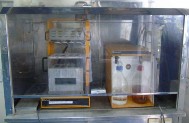
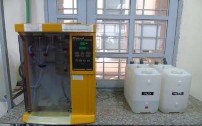
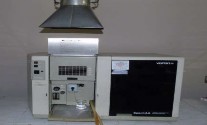
Hình 1. Hệ thống vô cơ mẫu Hình 2. Máy chưng cất nitơ Hình 3. Máy F-AAS (Varian)
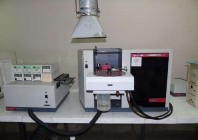
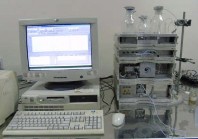

Hình 4. Máy GF-AAS (Varian) Hình 5. Máy HPLC Hình 6. Máy UV-Vis (HP)
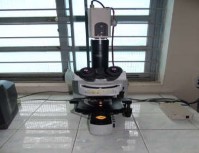
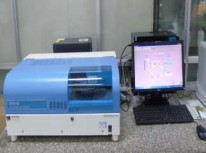
Hình 7. Kính hiển vi Hình 8. Máy phân tích thủy ngân (Milestone)
Enzyme | pHopt | Topt (oC) | Liều lượng khuyến cáo |
Flavourzyme 500MG | 5,5 ± 6,5 | 50 ± 55 | 0,5 ± 2 g / kg protein (0,05 - 0,2%) |
Alcalase 2,4L | 7 ± 8 | 45 ± 60 | 0,5 ± 1 g / kg protein (0,05 - 0,1%) |
Neutral PL | 5,5 ± 7,5 | 35 ± 60 | 1 ± 45 g / kg protein (0,1 - 4,5%) |
hụ lục 3. Đánh giá phân loại độc tính cấp theo giá trị LD50 gần đúng | |||
Có thể bạn quan tâm!
-
 Hàm Lượng Vi Sinh Trong Các Sản Phẩm Bột Dinh Dưỡng Và Đối Chứng
Hàm Lượng Vi Sinh Trong Các Sản Phẩm Bột Dinh Dưỡng Và Đối Chứng -
 Hàm Lượng Protein Toàn Phần Trong Máu Chuột Ở Các Lô Thí Nghiệm
Hàm Lượng Protein Toàn Phần Trong Máu Chuột Ở Các Lô Thí Nghiệm -
 Đánh Giá Ảnh Hưởng Của Sản Phẩm Cao Lên Độ Bền Chắc Của Xương Chuột
Đánh Giá Ảnh Hưởng Của Sản Phẩm Cao Lên Độ Bền Chắc Của Xương Chuột -
 Thống Kê Stagraphic Của Thí Nghiệm 1 Đối Với Dẫn Xuất A, Theo Kiểu Lsd
Thống Kê Stagraphic Của Thí Nghiệm 1 Đối Với Dẫn Xuất A, Theo Kiểu Lsd -
 Phân Tích Độ Thủy Phân Protein Dùng Phương Pháp Kết Tủa Với Tca
Phân Tích Độ Thủy Phân Protein Dùng Phương Pháp Kết Tủa Với Tca -
 Kết Quả Tối Ưu Hóa Quá Trình Thủy Phân Bằng Enzyme Neutral Đáp Ứng Độ Thủy Phân
Kết Quả Tối Ưu Hóa Quá Trình Thủy Phân Bằng Enzyme Neutral Đáp Ứng Độ Thủy Phân
Xem toàn bộ 224 trang tài liệu này.
Phụ lục 2. Điều kiện phản ứng của enzyme thí nghiệm do nhà cung cấp đề xuất
P
Mức độ độc cấp | Liều LD50 gần đúng | |
1 | Cực kì độc | > 0 – 5 mg/kg |
Rất độc | > 5 – 50 mg/kg | |
3 | Độc | > 50 – 300 mg/kg |
4 | Độc trung bình | > 300 – 2000 mg/kg |
5 | Độc tính thấp | > 2000 – 5000 mg/kg |
6 | Gần như không độc | > 5000 mg/kg |
Phụ Lục 4. Kết quả xây dựng qui trình phân tích collagen trong xương
Khảo sát lượng dung dịch tạo dẫn xuất
Thể tích dung dịch (A) (µl) | Thể tích dung dịch (B) (µl) | Lần lặp lại | Thời gian lưu (phút) | Diện tích peak (mAU*phút) | RSD (%) | |
5 | 10 | 1 | 1,028 | 561,2 | ||
5 NT4 NT 3 NT 2 NT 1 | 10 | 2 | 1,035 | 557,8 | 2,04 | |
5 | 10 | 3 | 1,034 | 579,3 | ||
10 | 20 | 1 | 1,055 | 748,8 | ||
10 | 20 | 2 | 1,019 | 612,5 | 10,99 | |
10 | 20 | 3 | 1,045 | 634,6 | ||
20 | 30 | 1 | 1,039 | 608,5 | ||
20 | 30 | 2 | 1,024 | 698,6 | 7,32 | |
20 | 30 | 3 | 1,033 | 685,1 | ||
30 | 40 | 1 | 1,018 | 700,3 | ||
30 | 40 | 2 | 1,031 | 654,3 | 5,12 | |
30 | 40 | 3 | 1,040 | 634,1 | ||
Xây dựng đường chuẩn hydroxyproline
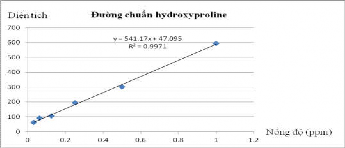
STT Mẫu Lần lặp lại | Nồng độ thêm chuẩn lý thuyết | Diện tích (mAU*ph | Nồng độ thực tế (ppm) | Hiệu suất thu hồi (%) | Hiệu suất thu hồi TB ± |
(ppm) | út) | SD (%) | |||
1 1 | 0 | 138,5 | 0,1689 | - | - |
2 2 | 0 | 141,1 | 0,1737 | - | - |
Kết quả xác định hiệu suất thu hồi
1






